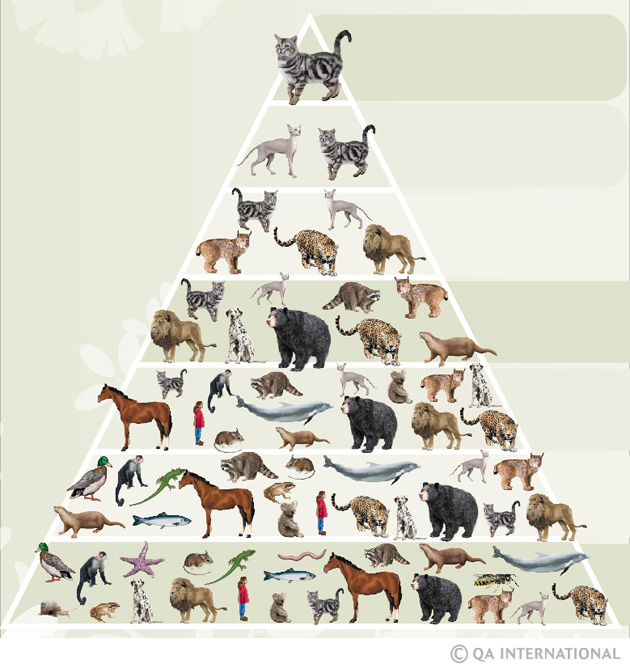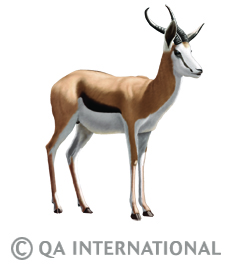
Species classification: a binomial nomenclature
In the 18th century, naturalist Carl Linnaeus invented a system for classifying all living species and defining their relationship to one another. In this system, each species belongs to a “genus”, a “family”, an “order”, a “class” a “branch” and a “kingdom”. Even though it has gone through several modifications, the Linnaean system is still used by most scientists today.

Species
Very closely related group that can reproduce among themselves. The domestic cat (Felis domestica) is a species of the genus Felis.
Genus
Group of animals with many common traits. The cat belongs to the genus Felis.
Family
Group of genera with common traits. The cat belongs to the family of felids.
Order
Group of families with a common origin. The cat belongs to the order Carnivora.
Class
Group of orders. The cat belongs to the class of mammals, which are animals with hair and whose females have mammary glands (which produce milk).
Branch
All living things with the same distant ancestor. The cat belongs to the branch of vertebrates, which are animals that have a spinal column.
Kingdom
This level is the broadest category for classifying living things. The cat belongs to the animal kingdom. Biologists identify five kindoms: fungi, monerans (like bacteria), plants, animals and protists, which are single-celled organisms.
A latin name
Every living thing has been given a Latin name made up of two words. The first word designates the genus to which the organism belongs; the second specifies the species. The genus and the species are written in italics and the genus is written with a capital letter. For example, the domestic cat has been given the name Felis domestica, the snow leopard, Uncia uncia, and the Springbok antelope, Antidorcas marsupialis.

Also see:
In the Visual Dictionary:
- "Animal Kingdom" section
- "Vegetable Kingdom" section
In the encyclopedic capsules:
- The food chain of living things
- The fauna and flora of polar regions: Antarctic
- Islands, treasure chests of biodiversity
- The deserts of the Americas and Africa
- The octopus, a cunning and clever animal !
- The spider, a web master
- The frog, queen of the metamorphosis
- Marsupials
- The primates
- Fishes: from ocean to our plate
In the ikonet games:
- Put it in its place!: examples of primates
- Put it in its place!: examples of carnivorous mammals




